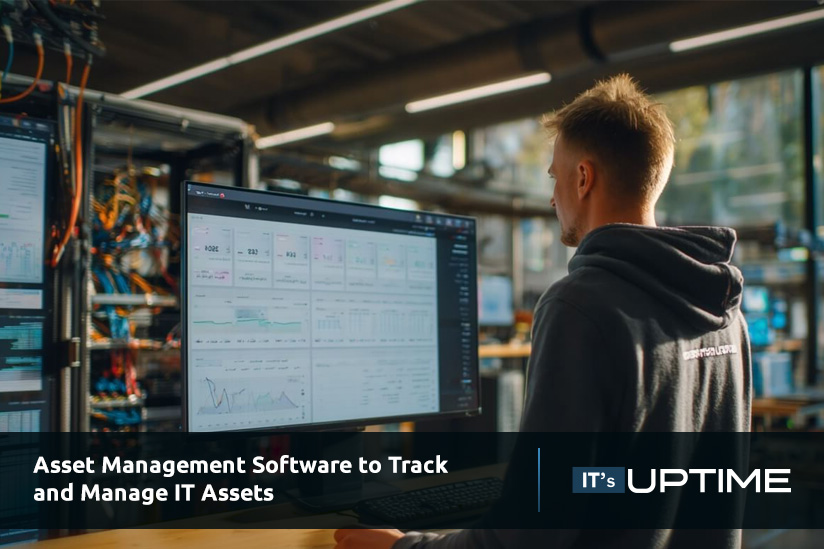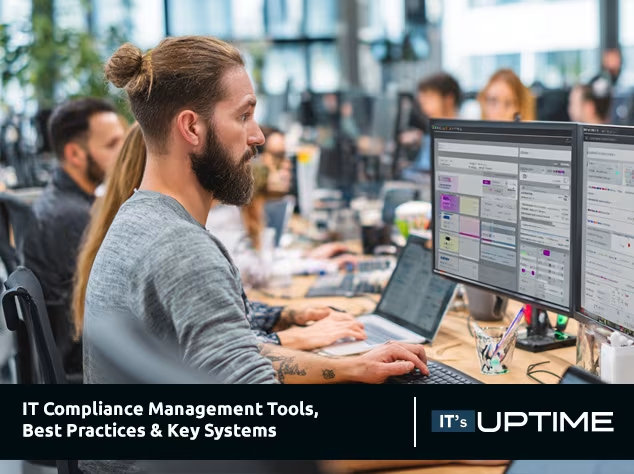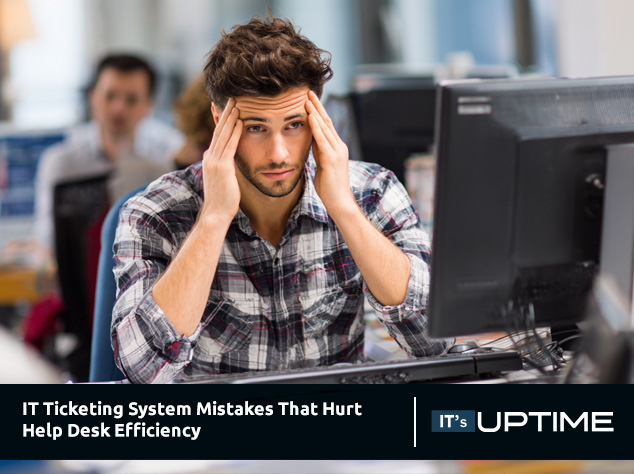Asset Management Software to Track and Manage IT Assets
George Grubor


Managing 10-120 endpoints is no small task. Whether you're tracking laptops, servers, or software licenses, having the right tools in place is essential. This blog will help you understand how asset management software compares to spreadsheets, and why growing businesses need a more scalable solution. If you have 20 or more employees on your team, this blog is for you. We'll also explore how asset tracking, software license monitoring, and asset data management can streamline your operations and optimize your IT investments.
What is asset management software?
Asset management software is a digital tool designed to help businesses track, manage, and maintain their IT and non-IT assets. These systems go beyond basic inventory tracking by offering features like lifecycle monitoring, license compliance, and automated alerts.
Unlike spreadsheets, which require manual updates and are prone to errors, asset management software provides real-time visibility into every asset. It helps IT teams make informed decisions, reduce downtime, and ensure compliance with software license agreements. This is especially important for businesses managing both hardware and software across multiple locations.

Deep dive: Key components of IT asset management
IT asset management (ITAM) involves several moving parts. Let’s break down the core components that make up a complete ITAM strategy.
Asset discovery and inventory
This feature automatically scans your network to identify all connected devices. It ensures that no asset goes unnoticed, which is critical for security and compliance.
Software license tracking
Managing software licenses manually can lead to overspending or non-compliance. Automated tracking ensures you only pay for what you use and stay audit-ready.
Lifecycle management
From procurement to disposal, asset lifecycle management tracks every stage of an asset’s life. This helps in planning upgrades and replacements before issues arise.
Maintenance and warranty tracking
Keeping up with maintenance schedules and warranty expirations can save time and money. Alerts and reports help you stay ahead of potential failures.
Integration with help desk systems
Linking asset data with your help desk allows for faster issue resolution. Technicians can see the full history of a device before troubleshooting.
Reporting and analytics
Customizable reports give insights into asset utilization, costs, and performance. This helps in making data-driven decisions.
Mobile app access
A mobile app allows technicians to update asset records on the go. This is useful for field teams or large office environments.
Key benefits of using asset management software
Here are some of the most important advantages of switching from spreadsheets to a dedicated asset management solution:
- Reduces human error by automating asset tracking and updates
- Improves compliance with software license agreements and audits
- Saves time by streamlining inventory and maintenance workflows
- Enhances visibility into hardware and software usage
- Supports better asset planning and budgeting decisions
- Helps reduce costs by avoiding duplicate purchases and unused licenses

Why spreadsheets fall short for IT asset management
Spreadsheets may work for small teams, but they quickly become unmanageable as your business grows. They require manual updates, are difficult to share securely, and offer no automation. This increases the risk of outdated or inaccurate asset data.
In contrast, asset management software is built to scale. It centralizes all asset information, automates routine tasks, and provides real-time insights. For businesses in Wauwatosa, Wisconsin and beyond, this means fewer surprises and more control over IT resources.
Deep dive: Choosing the right asset management solution
Selecting the right system depends on your specific needs. Here are the main factors to consider when evaluating options.
Types of assets you manage
Some tools are better suited for hardware, others for software, and some handle both. Make sure the solution supports all the asset types in your environment.
Scalability and flexibility
Look for a system that can grow with your business. It should handle more endpoints and users without slowing down.
Customization options
Your workflows may be unique. Choose software designed to adapt to your processes, not the other way around.
Integration capabilities
A good solution should integrate with your existing tools like help desks, procurement systems, and directory services.
User interface and ease of use
If the system is hard to use, your team won’t use it. A clean, intuitive interface is essential for adoption.
Vendor support and training
Reliable support and onboarding resources can make or break your implementation. Look for vendors with strong customer service.
Cost and ROI
Consider both upfront and ongoing costs. A better asset management solution should pay for itself by reducing waste and improving efficiency.

Implementation tips for growing businesses
Rolling out asset management software doesn’t have to be overwhelming. Start by auditing your current assets and identifying gaps in your data. Then, choose a platform that meets your asset management needs and supports your growth.
Train your team on how to use the system and set clear policies for updating asset records. Use automation features to reduce manual work and ensure consistency. Regularly review reports to identify trends and areas for improvement.
Best practices for managing IT assets effectively
Follow these tips to get the most out of your asset management software:
- Keep asset records updated with accurate and complete information
- Use automation to schedule maintenance and track warranties
- Assign ownership to every asset for accountability
- Regularly audit your inventory to catch discrepancies
- Set alerts for expiring software licenses or warranties
- Review usage reports to optimize asset allocation
A consistent approach helps you stay organized and reduces the risk of costly mistakes.

How IT's UpTime can help with asset management software
If you're struggling to keep track of your IT assets, you're not alone. Many growing businesses outgrow spreadsheets but aren't sure what to do next. At IT's UpTime, we specialize in helping teams like yours implement reliable asset management software that fits your needs.
We’ll guide you through the entire process—from selecting the right tool to setting it up and training your staff. Whether you're managing 10 or 120 endpoints, we make it easy to get started and stay in control.
Frequently asked questions
What is asset management software and how does it help?
Asset management software is a tool that helps businesses track and manage physical and digital assets. It improves visibility, reduces errors, and ensures compliance.
By using asset tracking and automated updates, you can streamline operations and maintain accurate asset data across your organization. This leads to better planning and fewer surprises.
How does IT asset management (ITAM) differ from general asset tracking?
IT asset management focuses specifically on IT-related assets like computers, servers, and software. It includes tracking, maintenance, and compliance.
While general asset tracking may include furniture or vehicles, ITAM software is designed to optimize IT performance and reduce risk. It also helps manage software license use and warranty coverage.
Can I track software licenses with asset management software?
Yes, most asset management software includes tools to monitor software license usage. This helps you avoid overpaying or violating agreements.
With license tracking software, you can automate renewals, ensure compliance, and streamline audits. It also helps you identify unused licenses that can be reassigned.
What types of data can I store in an asset management system?
You can store asset data like purchase date, location, user, warranty status, and maintenance history. Some systems also track software versions and configurations.
This centralized data helps streamline decision-making and optimize asset use. It also supports better reporting and easier audits.
Is it possible to automate updates and alerts?
Yes, automation is a key feature of modern asset management software. You can set alerts for maintenance, license renewals, or warranty expirations.
Automated tracking software reduces manual work and ensures timely actions. It helps you stay ahead of issues and maintain accurate records seamlessly.
How does mobile access improve asset management?
A mobile app allows technicians to update asset records from anywhere. This is especially useful for field teams or large facilities.
It ensures real-time updates and reduces delays in data entry. Mobile access also helps streamline workflows and improve response times.









